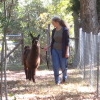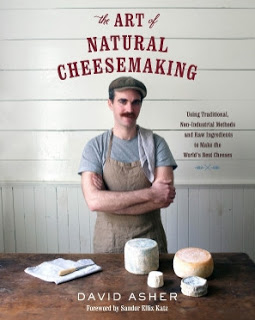

| Online: | |
| Visits: | |
| Stories: |

| Story Views | |
| Now: | |
| Last Hour: | |
| Last 24 Hours: | |
| Total: | |
The Cheese Making Book I've Been Looking For
I almost didn't buy this book. While The Art of Natural Cheesemaking: Using Traditional, Non-Industrial Methods and Raw Ingredients to Make the World's Best Cheeses by David Asher got a lot of really good reviews over at Amazon, I also took a look at the one- and two-star reviews. One of them claimed that the book read like a political manifesto. I couldn't imagine what that meant, but I can tell you that I am not all that impressed with politics. Yes, I vote and try to be a good citizen, but blind party loyalty, party bashing, and trying to turn everything into a political weapon is not my cup of tea. The last thing I wanted to read was somebody on a political rant. I took the chance and bought it anyway. Happily it contains no rants, just a straightforward logical arguments for using traditional, non-industrial methods and raw ingredients to make cheese.
It turned out to be the cheese making book I've been looking for. When I first started making cheese, I bought Ricki Carroll's Home Cheese Making. While I found it informative, I knew I did not want to be dependent on buying cheese cultures. That doesn't fulfill my goal of increased self-sufficiency. My first cheeses were based on the recipe in The Little House Cookbook, substituting whey for buttermilk as a starter. My cheeses have been okay, but I've been wondering how to make them better. I think I've found my answer.
David's cheesemaking utilizes raw milk, kefir, good quality salt, and calf rennet tablets. He gives very thorough explanations for his preferences and why he chooses these over other ingredients. The simplicity of these ingredients plus the variety of cheeses he makes are what is exciting to me. He teaches how to make cheese by cheese types: yogurt cheeses, paneer, chèvre, aged chèvre, basic rennet curd cheeses, pasta filata, feta, white-rinded, blue, washed-rind, alpine, gouda, cheddar, and whey cheeses.
Also included are chapters on the philosophies of the various methods of making cheese, making kefir, cultured butter, sourdough, and cultured whey starters. He discusses how to cultivate the bacterial cultures sometimes used to develop specific types of cheese. There is an excellent discussion on rennet too (similar to my “What I'm Learning About Rennet” post) including a how-to on making calf (or kid) rennet. Chapters on cheese making tools with the pros and cons of each material, homemade tools, salt as an ally, the cheese cave, and troubleshooting round out the book.
If you don't have access to raw milk, you likely will feel that the book is a waste of money. If you have your own milk-producing animals or access to raw milk, and are looking for a more traditional, low-tech way of making cheese, then you will find this book to be a good investment. My plan is to start at the beginning of the book and work my way through the various cheeses and techniques. Soon I'll be showing you what I'm learning!
Source: http://www.5acresandadream.com/2016/05/the-cheese-making-book-ive-been-looking.html



